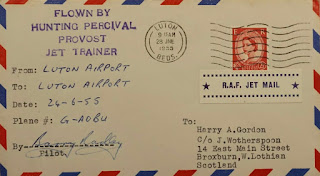Cecil Arthur Rea, A.F.C 1885-1975

Flight Lieutenant Cecil Arthur Rea, A.F.C., was born in Belfast in May 1885 and was employed on the Canadian Pacific Railway prior to joining the R.N.A.S. in late 1914. Rising rapidly to Chief Petty Officer in the Armoured Car Detachment, he was commissioned Flight Sub-Lieutenant in July 1915 and underwent his Pilot's Course at Eastchurch that October, his Service Record noting that among other achievements he completed some night flying. Further training at Hendon ensued, and during a return flight from Cranwell, Rea's machine, G.W. Box Kite No.3609, became inverted and crashed. No blame, however, was attributed to the Pilot who escaped unscathed. Advanced to Flight Lieutenant in October of the same year, he commenced his brief as an Experimental Pilot in July 1917 and had completed in excess of 150 hours on 'all types' by the middle of 1918 - pioneering work that resulted in a recommendation for his advancement to Flight Commander and, no doubt, largely contributed to the award of his A.F.C.Post-War, Rea, remaining in the regular R.A.F. until 1926, continued as a Test Pilot of Seaplanes, Amphibians and Aeroplanes. In 1924 he was granted special leave as one of two Pilots selected to fly the Gloucester Aircraft Company's Schneider Trophy entry, a Gloster Napier Seaplane, in the contest that year in the United States. Unfortunately, the other Pilot, Captain Broad, crashed the machine 'when alighting after its first flight' and, in Rea's words, 'performed some unrehearsed "hydrobatics" but escaped with a shaking' with the result that the 1924 British entry was scratched. On transfer to the Reserve in 1926, Rea joined Boulton & Paul Limited as Chief Test Pilot and the Company's Liaison Officer with the R.A.F. and Air Ministry. The following year he raised Boulton & Paul's profile by piloting one of their machines to win in the Tradesmen's Cup. In 1936 he was granted a five year extension of service in the Reserve, and the same year founded John Short Limited and established their aircraft works at Norwich. He resigned from the R.A.F. Reserve in 1938, and later in the year was appointed Operations Officer (Balloons) at the Air Ministry. In 1939 he moved to the Ministry of Aircraft Production, as Production Officer with responsibility for barrage balloon equipment. From 1940 to 1943 he was Senior Production Officer concerned with various aspects of balloons and aircraft, and between 1944-45 was Technical Officer at the 'German Document Centre'. At the conclusion of Rea's career as a Test Pilot he had flown a staggering total of 136 different types of aircraft.
















